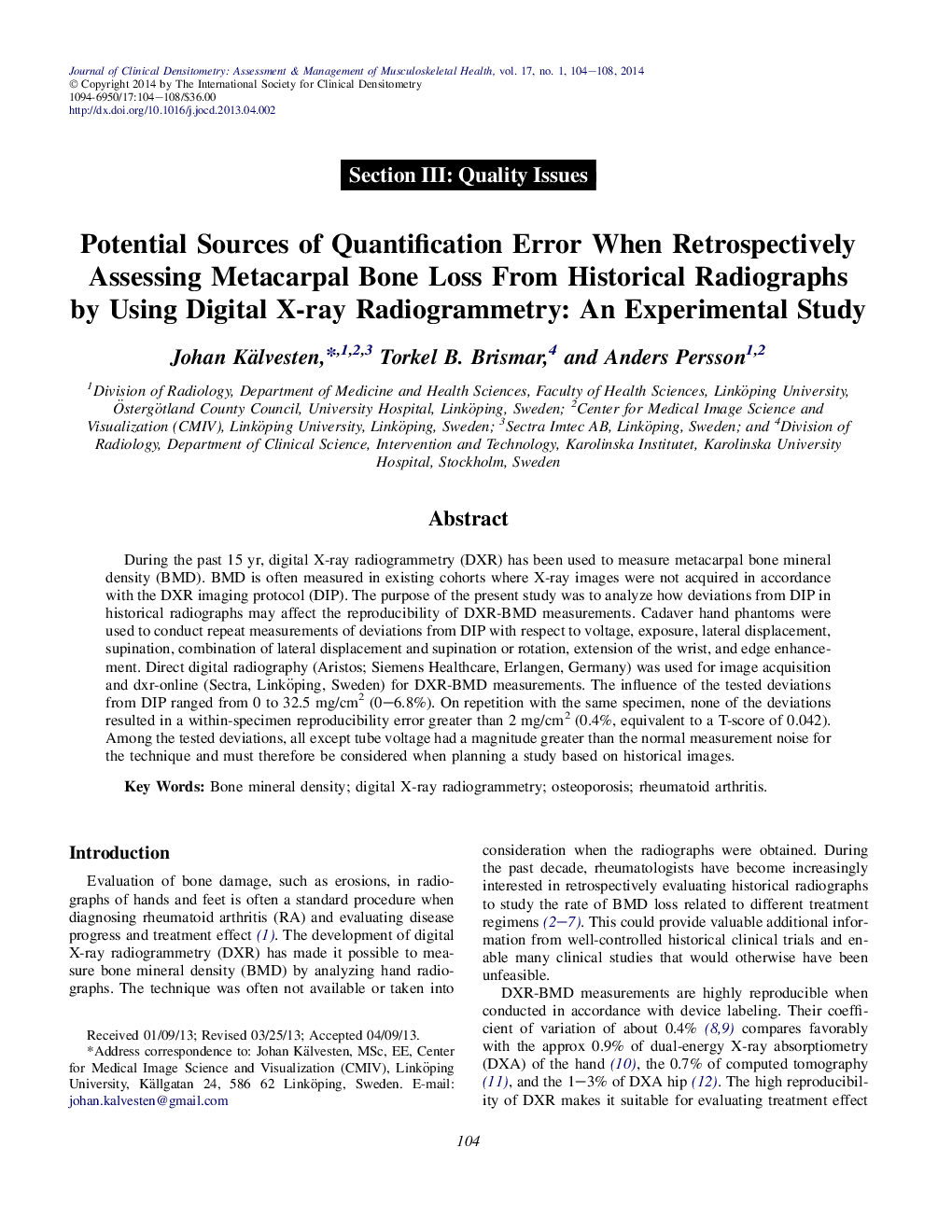| Article ID | Journal | Published Year | Pages | File Type |
|---|---|---|---|---|
| 10168083 | Journal of Clinical Densitometry | 2014 | 5 Pages |
Abstract
During the past 15Â yr, digital X-ray radiogrammetry (DXR) has been used to measure metacarpal bone mineral density (BMD). BMD is often measured in existing cohorts where X-ray images were not acquired in accordance with the DXR imaging protocol (DIP). The purpose of the present study was to analyze how deviations from DIP in historical radiographs may affect the reproducibility of DXR-BMD measurements. Cadaver hand phantoms were used to conduct repeat measurements of deviations from DIP with respect to voltage, exposure, lateral displacement, supination, combination of lateral displacement and supination or rotation, extension of the wrist, and edge enhancement. Direct digital radiography (Aristos; Siemens Healthcare, Erlangen, Germany) was used for image acquisition and dxr-online (Sectra, Linköping, Sweden) for DXR-BMD measurements. The influence of the tested deviations from DIP ranged from 0 to 32.5Â mg/cm2 (0-6.8%). On repetition with the same specimen, none of the deviations resulted in a within-specimen reproducibility error greater than 2Â mg/cm2 (0.4%, equivalent to a T-score of 0.042). Among the tested deviations, all except tube voltage had a magnitude greater than the normal measurement noise for the technique and must therefore be considered when planning a study based on historical images.
Related Topics
Health Sciences
Medicine and Dentistry
Endocrinology, Diabetes and Metabolism
Authors
Johan Kälvesten, Torkel B. Brismar, Anders Persson,
